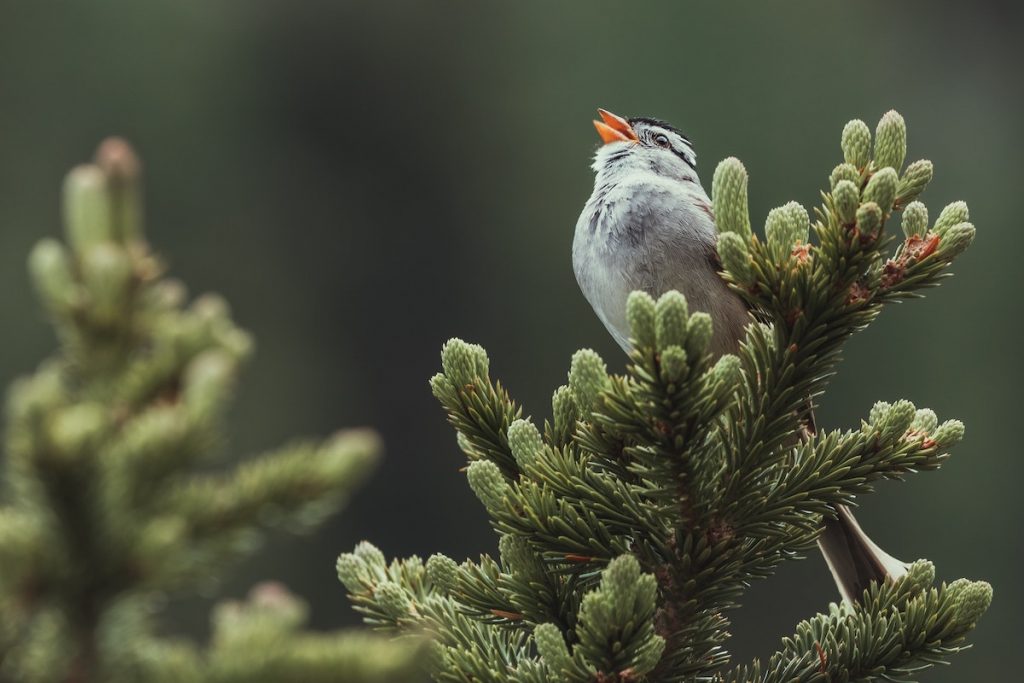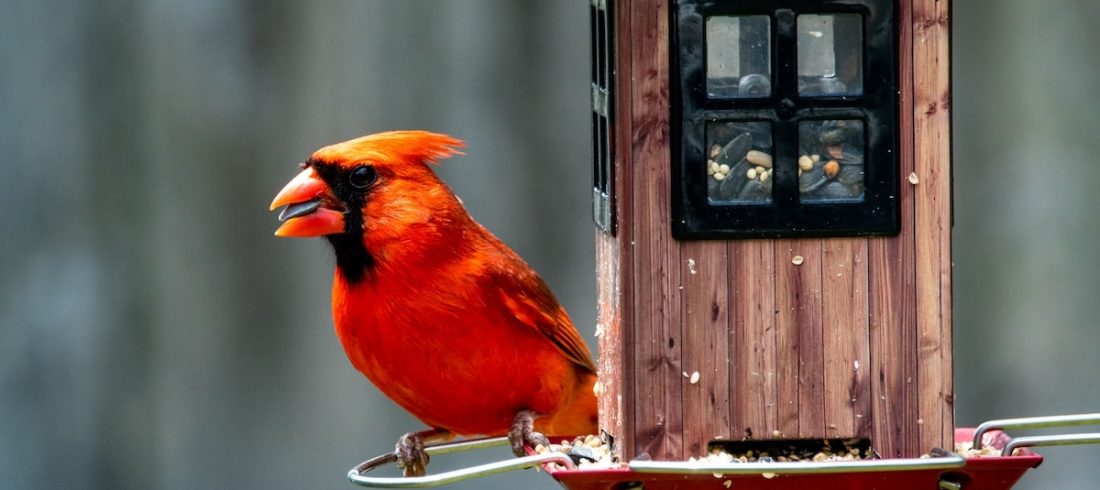As a birder, there is nothing more gratifying than learning how to identify birds just by simply listening to their songs and calls. This satisfaction mainly comes from putting a name to a bird behind a specific call or song, which shows why Song ID skills are essential.

Songs versus calls
Despite birds having a wide range of songs and calls, there exist important distinctions between the two. Function is one of the key facets highlighting these differences between birds’ calls and songs. For example, birds can use songs to attract mates and defend their territory, which is why males are the ones that mainly sing. Songbirds or owls and nightjars are good examples of birds that fall in this category.
So, how do you distinguish a call from a song?
Calls are usually made up of one syllable, meaning they are shorter and simpler. However, when it comes to songs, they feature more than one syllable. In addition, songs feature a clear pattern that comprises several syllables, making them more complex than calls.
Let’s take the Song Sparrow as a practical example for this case:
- Here is a Song Sparrow’s melody, and
- Here is a Song Sparrow’s chip call.
Notice the difference? Well, I guess you have. However, there is a little ambiguity to this approach simply because not all songs are complex. There are always some exceptions made up of a minority bird groups that barely sing more than a syllable, such as the Henslow’s Sparrow.
Keep in mind that, songs vary from one species to another, but overall, they carry some sort of similarities and functions.
Type of calls
There are a variety of categories of sounds that a single bird group can exhibit. Some birds can generate more than 30 different sound categories, and a good example is the Common Raven. In fact, this bird can produce up to 33 different sounds, with each sound having multiple meanings.
And so, here are four different types of calls that you should know as a birder:
Contact calls
Contact calls may vary depending on the situation at hand. ‘Separation calls,’ for example, are much louder and more urgent than other contact calls, which are usually short, quick, and soft. Overall, contact calls are meant to help birds reach out or keep in touch with one another, mostly when hunting for food.
Begging calls
Begging calls are common with youngsters who mostly make these sounds when begging for food. They use these calls to gain attention from their parents, like “feed me.” These calls only happen upon parent arrival to the nest. Also, these calls might be repeated regularly at a high tone, making these sounds quite unpleasant.
It is important to keep a safe distance when performing call and Song ID in the wild to not spook the youngsters.
Flight calls
Some birds, more so, the less-social species, do feature distinctive flight calls that, in most cases, are different from their normal calls. Shorebirds, on the other hand, do vocalize by calling back and forth when moving in flocks. Another good example of flight calls happens during the nighttime migration of songbirds.
Alarm calls
Alarm calls play a huge part in birds’ protection mechanisms as they use these calls to respond to different threats. Basically, there are two categories of alarm calls:
- Short, quiet, high-pitched sounds – Alert others about threat without disclosing caller’s location
- Deep and loud sounds – mostly common in smaller species when rallying the troops
When do birds sing?
First, it is important to note that there is no specific time in which all birds sing. But if you narrow your search to only focus on one species/group of birds, then you can determine the time in which most of them sing. Generally, singing time for birds is dependent on the following things:
- Time of the year,
- Time of the day, and
- Bird species.
And so, based on time of year and hour of the day, we narrow our search into two categories:
The dawn Birds choruses
Dawn choruses are common in bird species like sparrows, robins, goldfinches, wrens, wood pigeons, blackcaps, blackbirds, etc.
The dawn choruses are the morning tunes that wake you up just before the sunrise. During springtime, which is usually considered the most intense period of birdsongs, the songs typically start an hour before sunrise. Spring is also a period that seamlessly matches with most birds’ mating season as it begins around March and runs all the way through to July.
Night-time bird songs
Robins are excellent examples of nighttime singers, along with the nightingale, of course, that mostly sings during the summer (April to August). Hearing robins sing at night is not unusual. Furthermore, this species is well known to sing throughout the year, except only when molting.
And so, as a beginner birder, it’s usually ideal to start your bird identification lesson during the winter months. But why?
Well, the fact is most birds fall silent during winter, and you can only have fewer species like robins singing. Therefore, distinguishing birds singing will be pretty easy as there is fewer bird noises.
How to listen
If we take dawn choruses, for example, they do feature lots of chirps from different species of birds. So, how do you distinguish and pick apart one chirp from another?
Well, the song ID tips that I’m going to share with you will revolve around rhythm, tone, repetition, and pitch. These are like ‘four basic elements’ that make up every chirp.
Rhythm
Each bird song features a different tempo characteristic that makes it unique in some way.
Pitch
A specific bird species usually has their own characterized range onto which they sing on. Some of the common range characteristics are steady voices, deeper voices, higher voices, sweet descending whistles voices, and rising buzzy songs.
Repetition
Mockingbirds and Brown thrashers are good examples of birds that repeat specific phrases or syllables before moving on to the next sound.
Tone
The tone is a very distinctive feature that is hard to master but can easily help you determine a bird’s identity. Paying attention to the bird’s tone can help you determine whether its tone is:
- Harsh – i.e., caw of an American crow
- Scratchy or simply a liquid,
- Rich or thin – i.e., Blue Grosbeak
- Buzz – i.e., Golden-winged Warbler’s song
- Flute-like tone, clear whistle, or metallic – i.e., the rusty screech of a Common Grackle or a Hermit Thrush.
- Clear trill – for example, Pine Warbler’s song
Memorizing tone is one of the most effective ways to determine a bird’s identity.
Bird Identification tips
If you’re a beginner, here are 6 bird identification tips that will help enhance your song ID abilities. Note all these tips are simply birding by ear tips.
- Pick your spot: Find the best place where you can easily find birds, i.e., parks and gardens.
- Listen and watch: Attentive listening is a key skill that will help differentiate two similar bird voices. Watching a bird while it sings is also very important as it enables you to create photographic memory that lasts longer than just listening.
- Work with common birds first: Start by listening to birds that you regularly encounter, such as the mourning dove, house finch, etc.
- Record the sound: If you can record a bird while it sings, then you can start building your own record that will help you study bird identification first. Remember to include comments on your recording to avoid confusion.
- Try using various bird recall sounds techniques, such as silly phrases, Lin drawing, or mnemonics.
- Please keep it simple: Focus on one or two birds daily, listen and record their sounds. Come back to your spot the next day, try listening and see if you can identify those two birds by simply listening.


